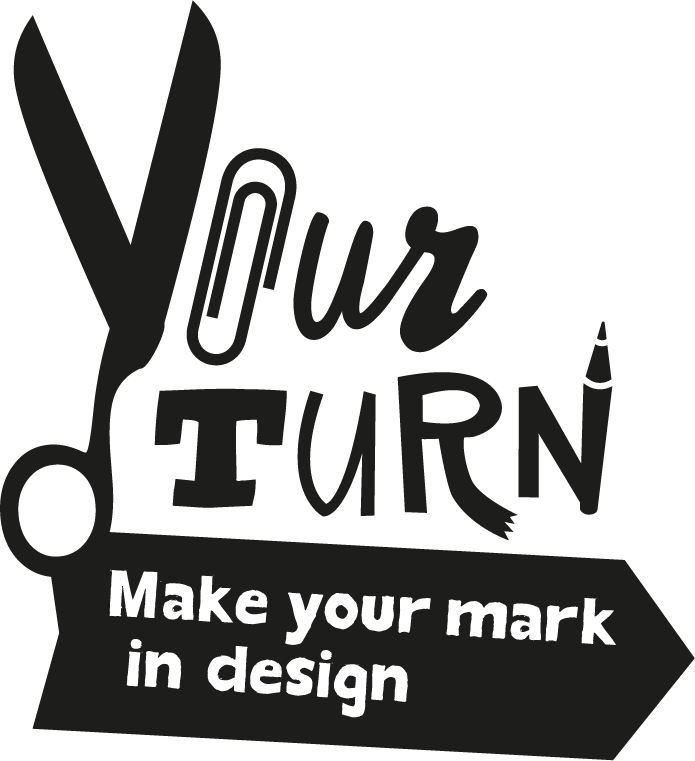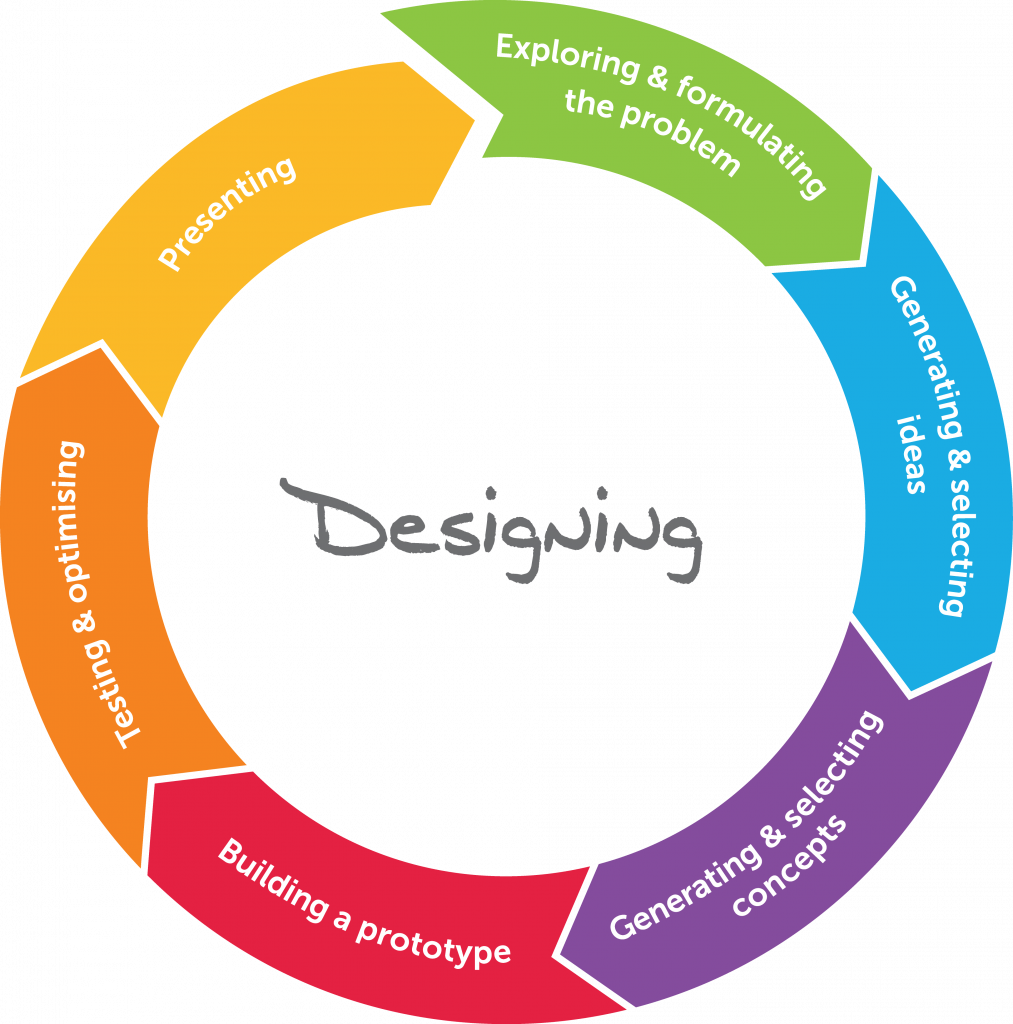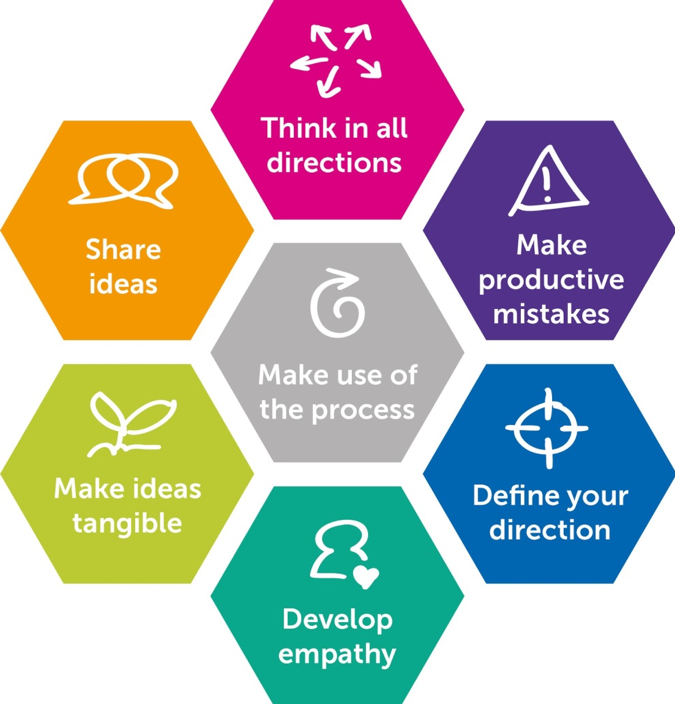
The techniques in this toolkit work best when they are applied in projects that adhere to the following principles:
Design is a process of multiple steps and iterations
The techniques offered on this website are intended to be used as building blocks for a design process following the steps of the design cycle (figure 1).

The toolkit is built upon established methods, techniques and approaches for teaching design skills to professionals. Many tools are derived from design methodology sources (such as the Delft Design Guide, 1st edition) and adapted to fit co-design with children. They have been developed with experts in design pedagogy and tested in practice.
A focus on skills raises the value for all
We believe that the tools should support and train participants’ skills. This is the most direct reward a participant can get from investing their time in a design project. Design skills are closely related to 21stcentury skills, which are thought to be indispensable for thriving in our rapidly changing society.
Training participants’ skills during the co-design project may take some time, but it is worthwhile for the quality of outcomes. Most tools presented in our toolkit have a inherent training aspects. As an example, the ‘forward with feedback’ tool helps participants to formulate criticism as actionable feedback, and to overcome participants’ resistance to criticism. The ‘inversed brainstorm’ is a creativity tool that offers easy steps for “thinking outside the box”. More explicit training of skills takes place in the tool ‘Puzzling a design pitch’ which prepares participants for creating their own design pitches.

‘Wetenschapsknooppunt TU Delft’ has established a set of seven design skills, see figure 2. From this set, we have especially focused on
- creativity (thinking in all directions)
- empathy
- presenting and communication (sharing ideas)
Research suggests that trying out each tool in a small ‘test case’, reflecting on the workings of each tool, before applying them in the proper design case can raise children’s ability to use them – and thus raise their competency and the design outcomes.
Formative evaluation helps training skills
The learning aspect of doing design projects with our tools is also greatly enhanced if it is combined with formative evaluation. This educational principle encompasses:
- Naming the goal of the activity and the design skill that is central in the learning process so that the success criteria are as tangible as possible for the participants.
- Practicing the skill during one or more design activities;
- Pausing and reflecting on the application of the skill, e.g. did the participants think in different directions or did they empathize with the user?
- Providing ‘feed forward’ and continuing with the design activity, e.g. you have generated many ideas, can you think of an idea that other children would not think of?
When formative evaluation is applied, the participants learn the skill more quickly. In addition, the quality of the outcomes of the design project will increase as well.
Creativity in multiple iterations
Children are often praised for their uninhibited creativity. Many indeed do like to think up new ideas but design does not end there. The typical design process uses multiple rounds of imagining multiple solutions, rating them against criteria and identifying aspects that need elaboration or improvement. Children who fall in love with their first idea often find it difficult to engage in subsequent rounds of elaboration. They don’t value criticism as a positive means to improve their design.
To support children in engaging with multiple design iterations, the toolkit offers:
- divergent thinking tools: diverse creativity techniques, such as associative thinking, multisensory inspiration, out-of-the-box thinking;
- convergent thinking tools: decision support techniques for comparing ideas and rating ideas against criteria;
- switch tool: a feedback technique that helps children appreciate feedback and make the switch from convergent thinking into a new round of divergent creativity.
Co-design creates value throughout the process
The value of children’s participation is certainly not limited to the final design they make. Every instance where children contribute to the design process, they produce potentially relevant outcomes. Insight and inspiration can be gathered from their opinion of the problem context, the criteria they prioritize, the labels they use for clustering related ideas, their ranking of the first ideas or the argumentation of their design choices. Undertaking a creative process with children provides many opportunities to understand and appreciate children’s thinking and doing in an array of desirable and innovative ways.
Co-design is communication
The client is not always present or available for immediate feedback. The co-design process can be asynchronous, meaning that clients and children make their contributions at separate times, taking in each other’s output and elaborating on it. Capturing and communicating intermediate results is hugely important therefore, since children’s creations are often not self-explanatory for an absent client.
The toolkit provides techniques to capture rich data, full of details and a ‘vibrant’ feeling, such as the location vlog or the video roll. Other tools support children in structuring and bringing detail to their design pitches.
Each design process is different.
Co-design is a flexible process. Each problem and context requires a unique set-up. With the help of the general principles on this page and the toolkit on the tools page, the designer/facilitator is invited to build a process that suits the specific design problem at hand and the skill set of the participants. Enjoy!
References
[1] Klapwijk, R. (2017). Creativity in Design. In C. Benson and S. Lawson, Teaching Design and Technology Creatively (pp. 51-72). Routeledge.
[2] Klapwijk, R. M. (2018). Formative assessment of creativity. In: De Vries, M. J. (Ed.). Handbook of technology education. Springer International Publishing, pp. 765-783.
